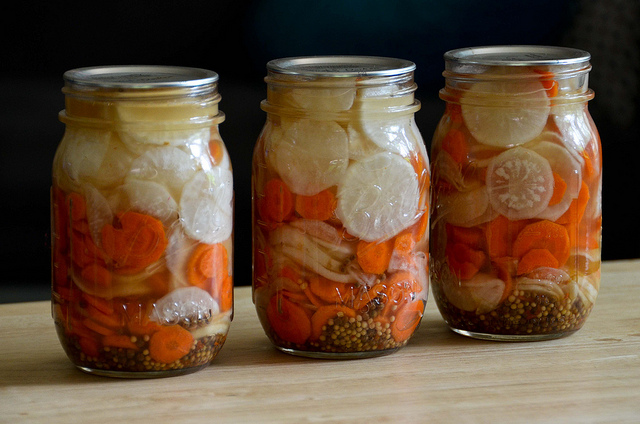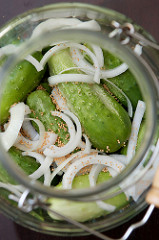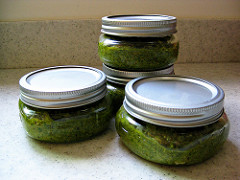 Whether you have your own garden’s harvest or produce hauled home from a farmers market to preserve, the satisfaction of putting food by for later consumption is identical. A colorful cache of stored summer and fall bounty to choose from in the bleak gray of winter is a reassuring and splendid thing indeed.
Whether you have your own garden’s harvest or produce hauled home from a farmers market to preserve, the satisfaction of putting food by for later consumption is identical. A colorful cache of stored summer and fall bounty to choose from in the bleak gray of winter is a reassuring and splendid thing indeed.
 There are all sorts of methods for preserving food, each with its own advantages. Options include water bath canning, pickling, freezing, preserving in oil, fermenting, salt curing, smoking and drying. What method(s) you choose to use will depend on ingredient quantities, amount of storage space, the time you can devote and your taste preferences. To ensure the finished products have the best possible flavor, it’s important to use ingredients harvested at peak ripeness and processed soon thereafter.
There are all sorts of methods for preserving food, each with its own advantages. Options include water bath canning, pickling, freezing, preserving in oil, fermenting, salt curing, smoking and drying. What method(s) you choose to use will depend on ingredient quantities, amount of storage space, the time you can devote and your taste preferences. To ensure the finished products have the best possible flavor, it’s important to use ingredients harvested at peak ripeness and processed soon thereafter.
I’ll admit to having limited experience preserving foods using many of these methods. In college I did try the water bath method with delicious results (i.e. chow-chow with cabbage and cauliflower and strawberry jam). It isn’t a difficult process, just a bit of a physical production, and it can be time-consuming, but worth the effort if you’re inclined, especially if you have stockpiles of produce and a buddy with whom to share the effort.
 I prefer to make small batches of things, using quicker and easier methods, like freezing and quick pickling. Recently I bought a few nice bunches of fresh basil at the farmers market and blended up a couple of half-pint jars of pesto, using my own garlic harvested back in July. This emerald green “gold” is now in my freezer waiting to be slathered on pasta or roasted potatoes, on a cold, dark night when comfort food is on order. Next up I’ll make refrigerator pickles with the surfeit of tender yellow summer squash and a few red peppers I gathered up at the market. This condiment will cheer up any platter that appears down the road this winter.
I prefer to make small batches of things, using quicker and easier methods, like freezing and quick pickling. Recently I bought a few nice bunches of fresh basil at the farmers market and blended up a couple of half-pint jars of pesto, using my own garlic harvested back in July. This emerald green “gold” is now in my freezer waiting to be slathered on pasta or roasted potatoes, on a cold, dark night when comfort food is on order. Next up I’ll make refrigerator pickles with the surfeit of tender yellow summer squash and a few red peppers I gathered up at the market. This condiment will cheer up any platter that appears down the road this winter.
The library can be your inspiration for safely preserving your own food with a cornucopia of resources available to you. There is even a free online course through Universal Class: “How to Can, Freeze, Dry and Preserve Food” you can take if you’d like to approach to this time-honored activity academically. So take a little time to put some food by this fall: you’ll appreciate your efforts and so will your friends — if you happen to have to a few spare jars to gift (hint-hint).
image credits: SK, Pickled Daikon and Carrot Coins (license); Chiot’s Run, Making Traditional Fermented Pickles (license); Katrina Parks, 016 (license) via Flickr


